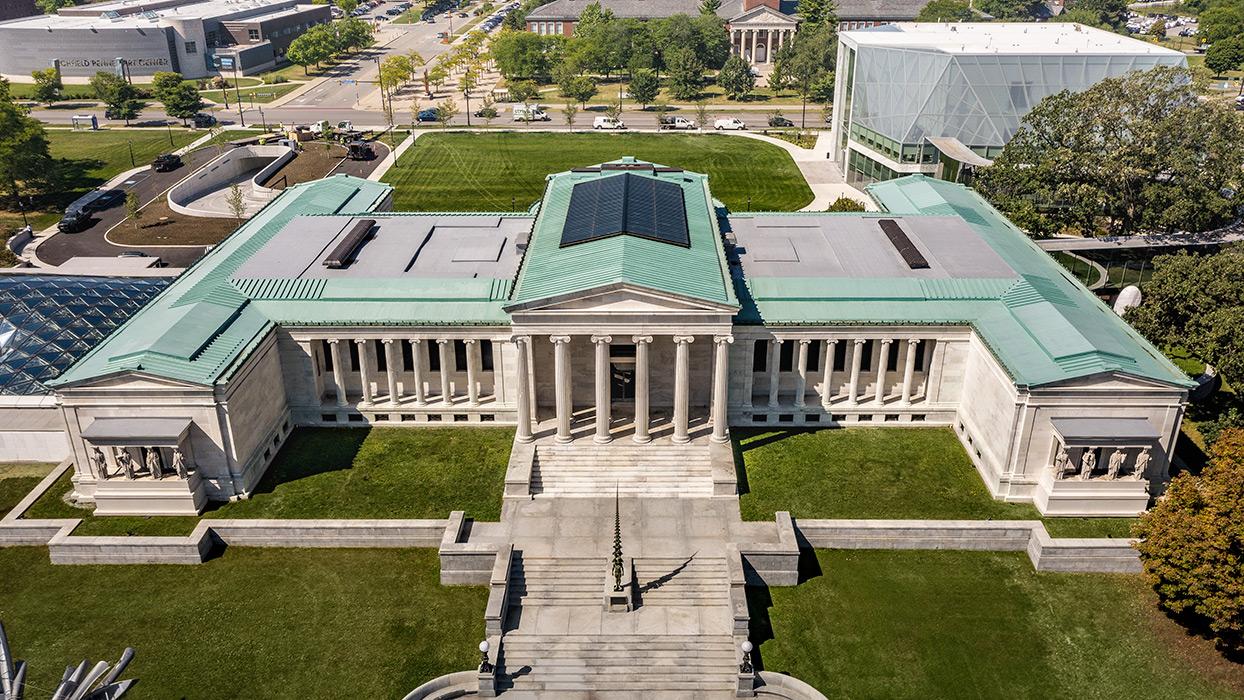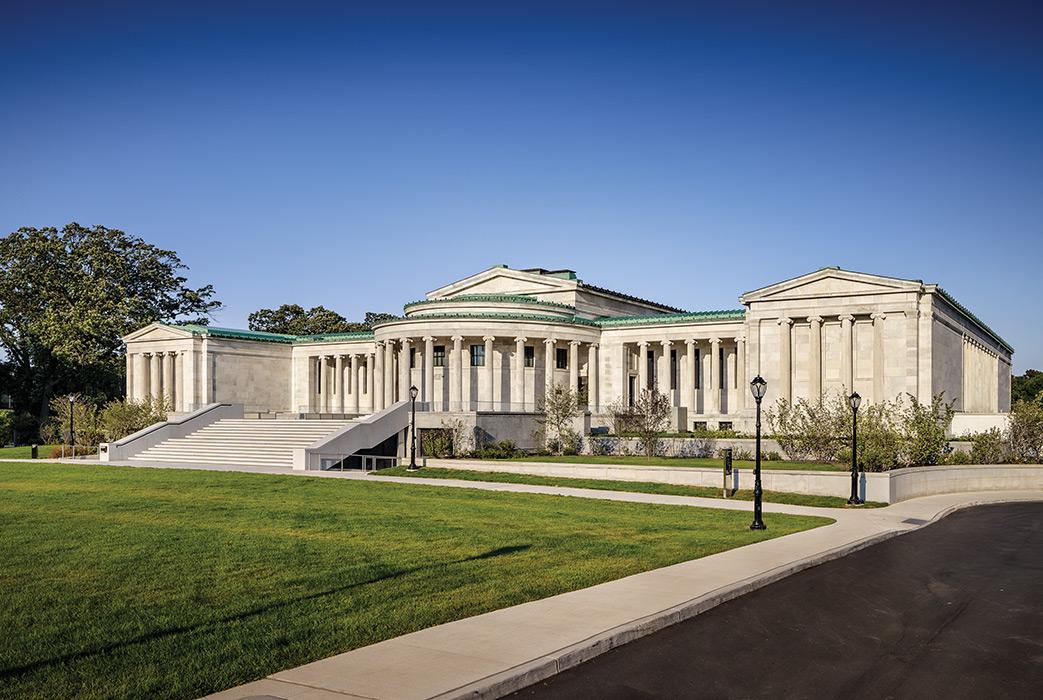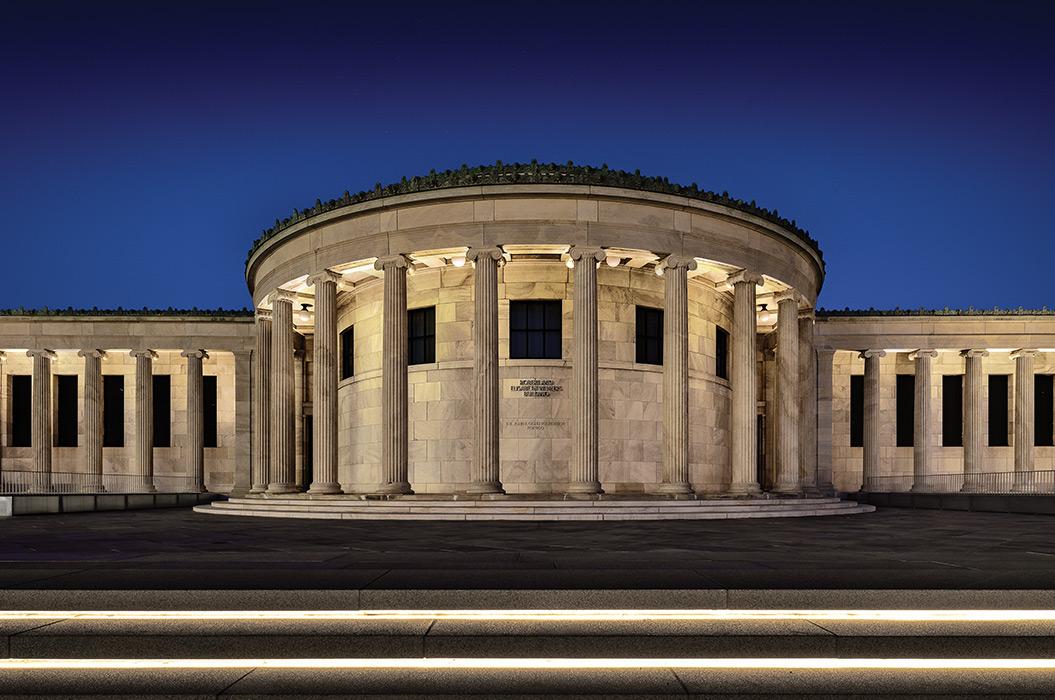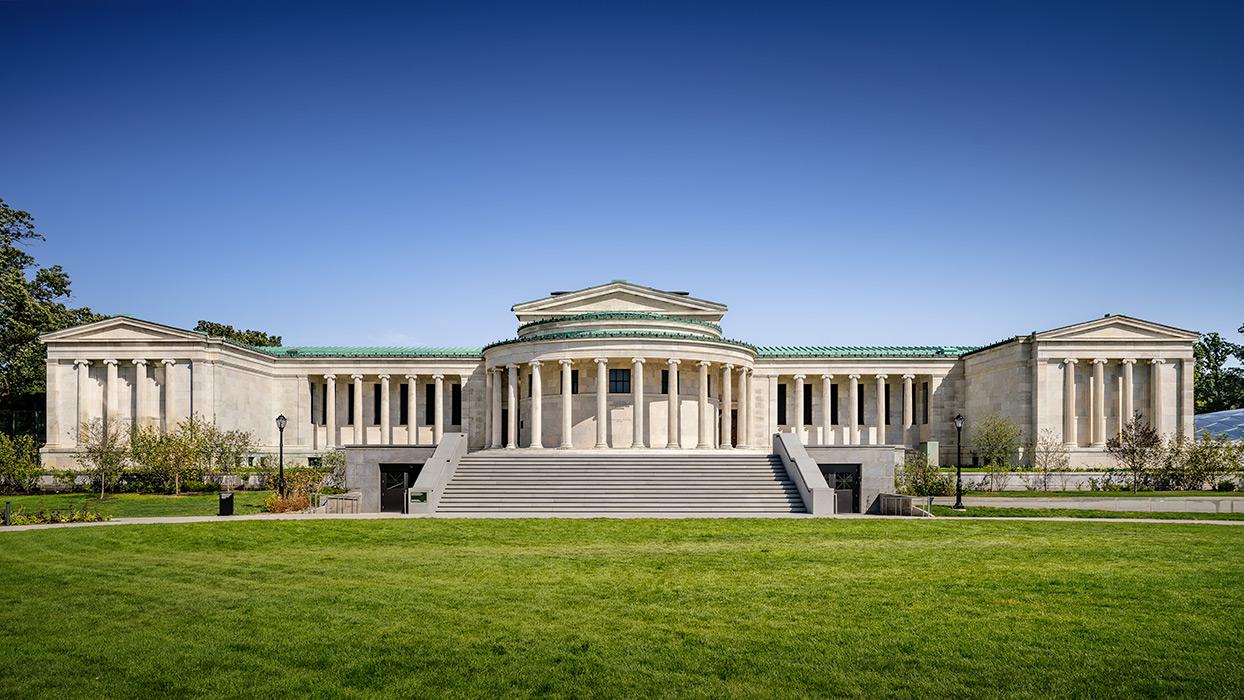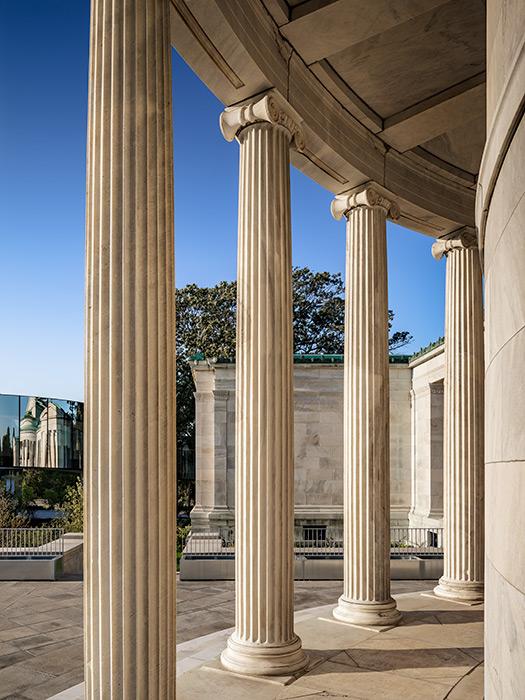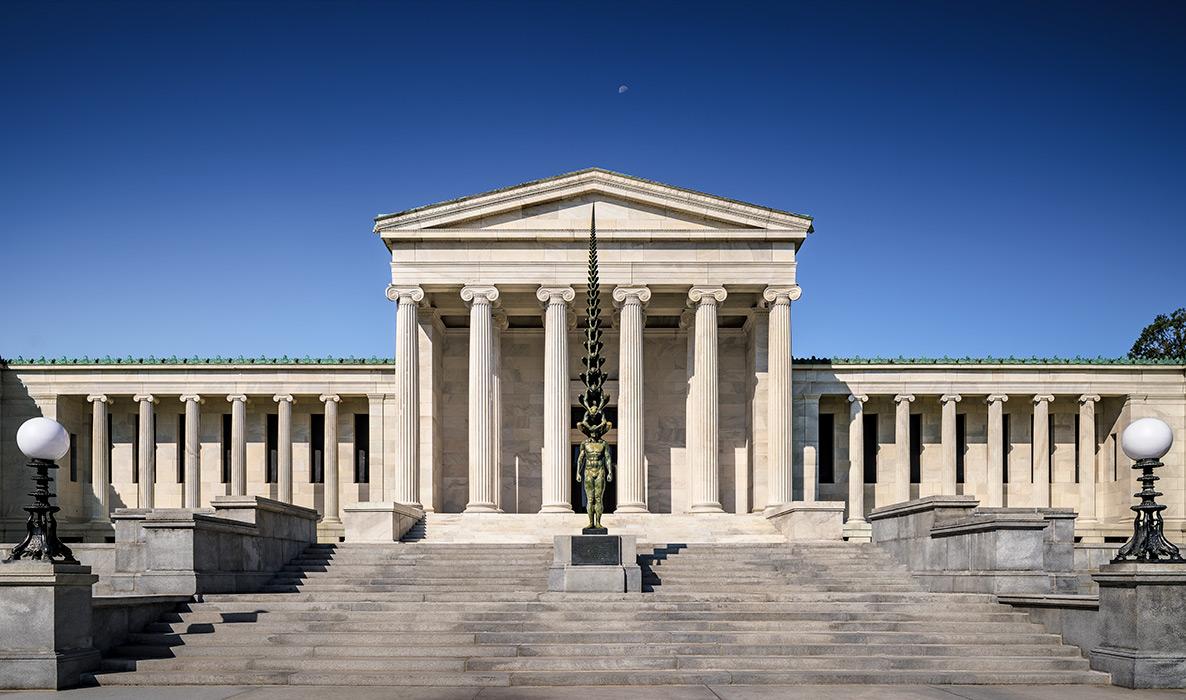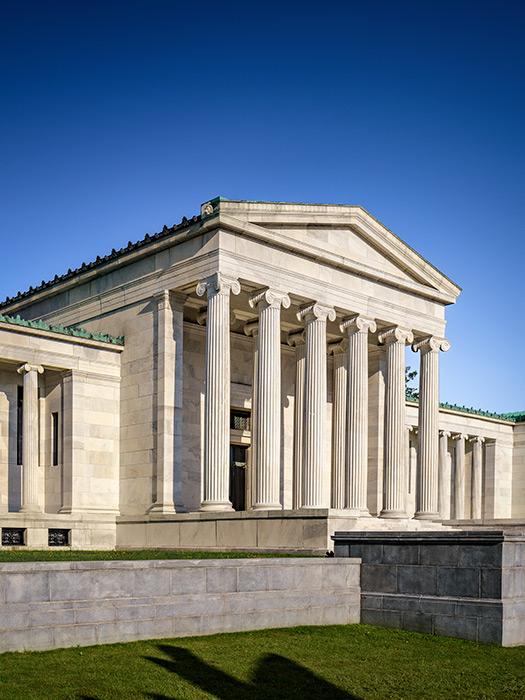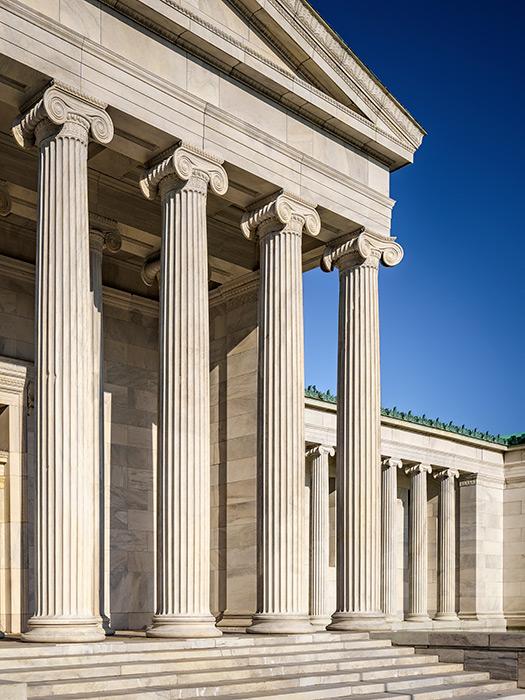
Buffalo AKG Art Museum - Restoration & Renewal
The first comprehensive restoration of the original 1905 Greek revival building in 60 years and a significant part of the Buffalo AKG Art Museum expansion project.
Overview
The Buffalo AKG Art Museum, originally known as the Albright-Knox Art Gallery, recently underwent an ambitious $230 million campus redevelopment for a new addition doubling its exhibition space and the restoration of its existing structures. The AKG campus includes the original 1905 Greek revival building designed by Edward B. Green, the 1962 Modern addition design by Gordon Bunshaft of SOM and the recently completed Gundlach Building designed by OMA & Cooper Roberston. The three buildings together, all sitting within an Olmsted designed park, form an impressive assemblage of iconic architectural structures designed by leading architects of their time.
We provided envelope renewal and historic preservation services to the Buffalo Fine Arts Commission for the gallery’s expansion and modernization.
Renewal & Restoration Highlights
- We performed a condition assessment of the façades, roofs and below-grade areas, which assisted the client in obtaining grants for façade related repairs.
- We designed repairs to restore the marble cornice of the original 1905 building, which included removal and resetting of the historic stonework. The 115-year-old ornamental copper crest, which wraps the building at the cornice, was restored off site and reinstalled in their original locations. At areas where cresting could not be salvaged, new material was stamped using artisanal methods similar to how it was fabricated in 1905.
- The west patio was dismantled down to the structural brick vaults so a new waterproofing membrane with setting bed could be installed. The original granite pavers were reinstalled following the waterproofing. The hemicycle stairs required complete rebuilding and new stone was sourced since the existing were heavily deteriorated. The monumental stairs, reminiscent of the original which were demolished in 1962, were also reconstructed in the OMA / Cooper Robertson plan yet detailed in a modern design with contemporary materials.
- We specified a series of cleaning mockups to evaluate safe and effective techniques to remove the atmospheric soiling that had obscured the natural veining of the Beaver Dam marble façades. Low-pressure micro abrasion was found to be both safe for the historic fabric and effective at removing a multitude of soiling types. Our team used Scanning Electron Microscopy (SEM) to identify deep penetrating stains within the marble.
- We participated in public hearings before both the Buffalo Preservation Board (BPB) and the State Historic Preservation Office (SHPO) for façade restoration approvals.
- The restoration of the Robert and Elisabeth Wilmers building restores the original character of the 117-year-old building while providing significant performance enhancements, including a robust roofing system.










